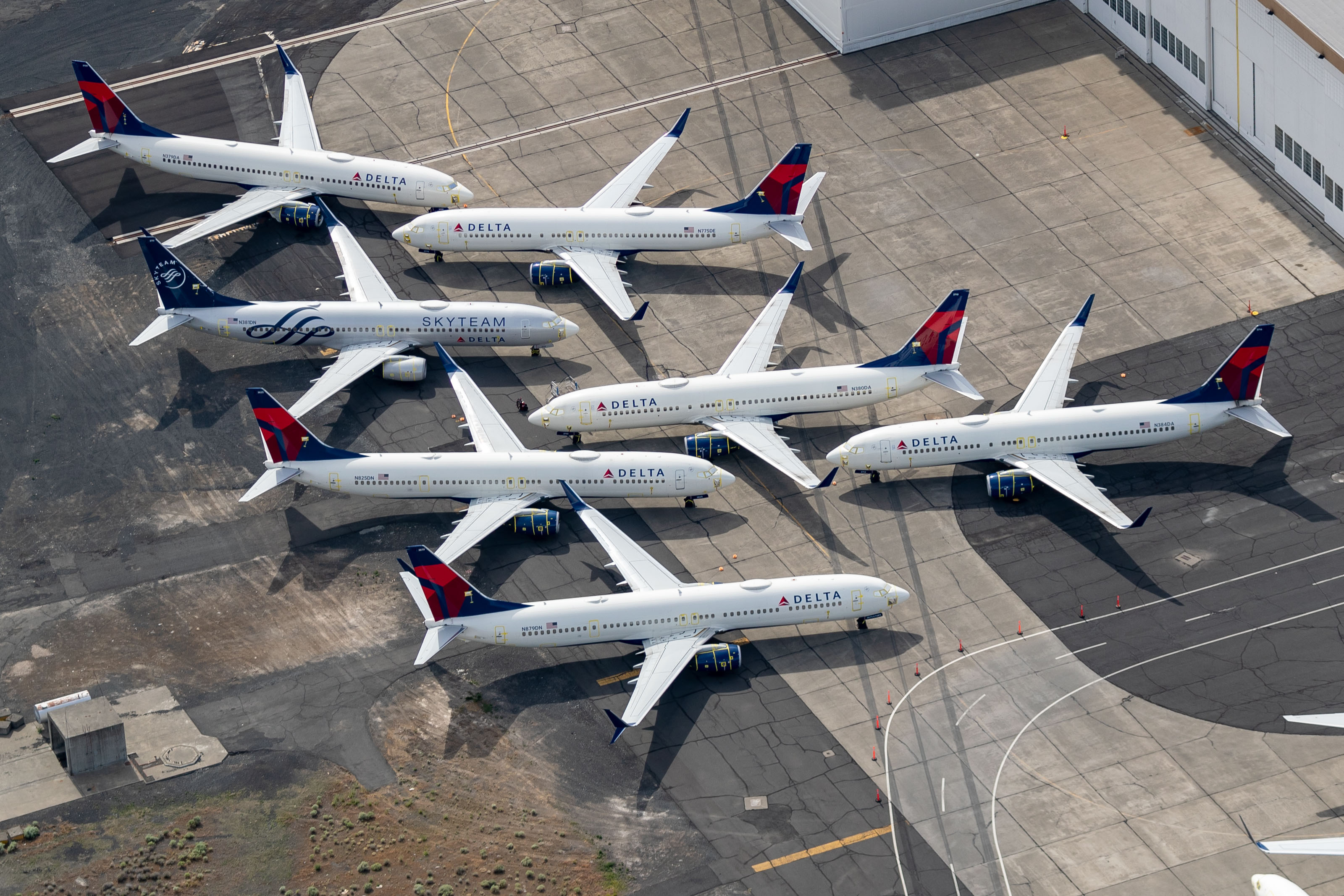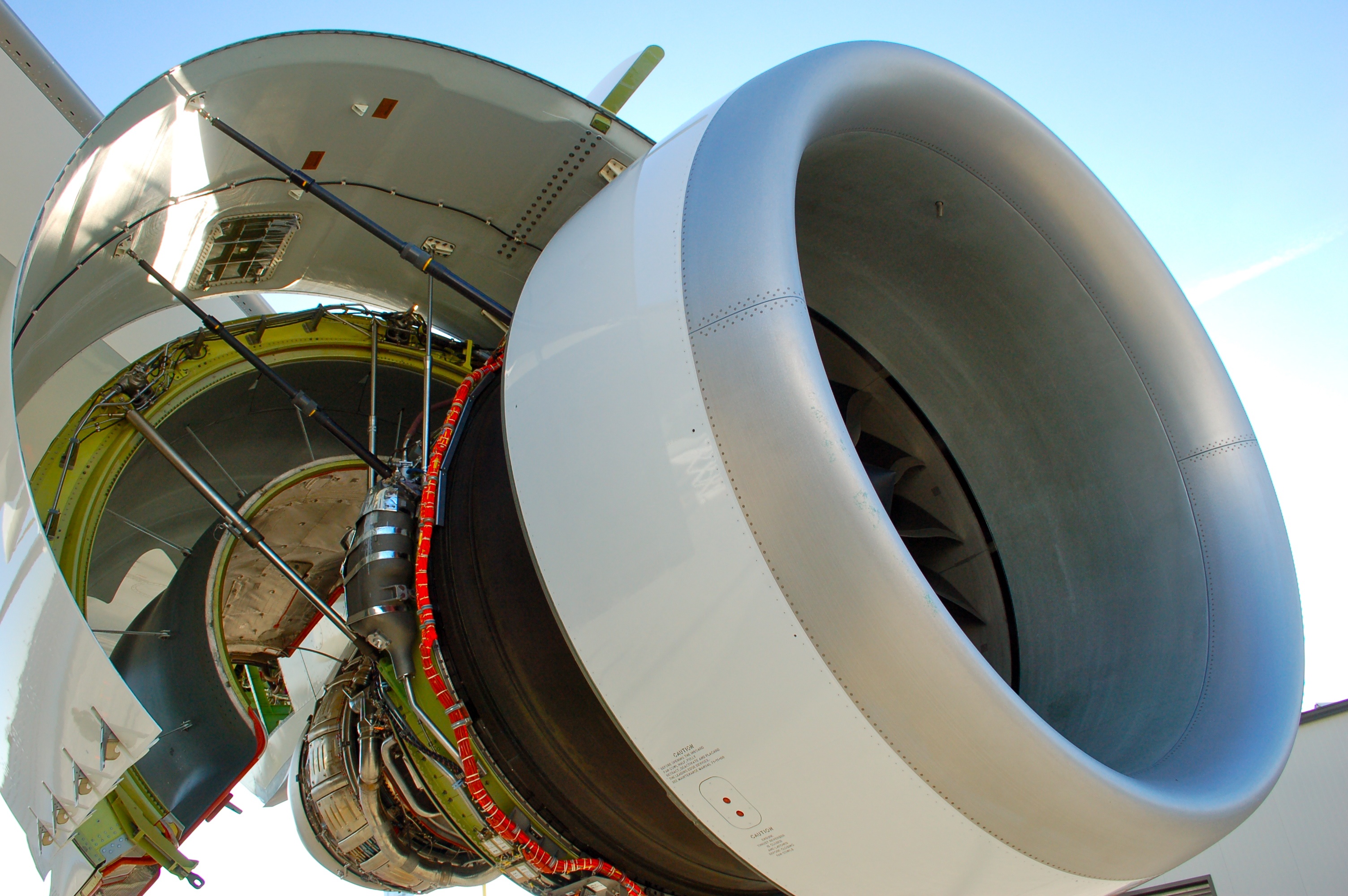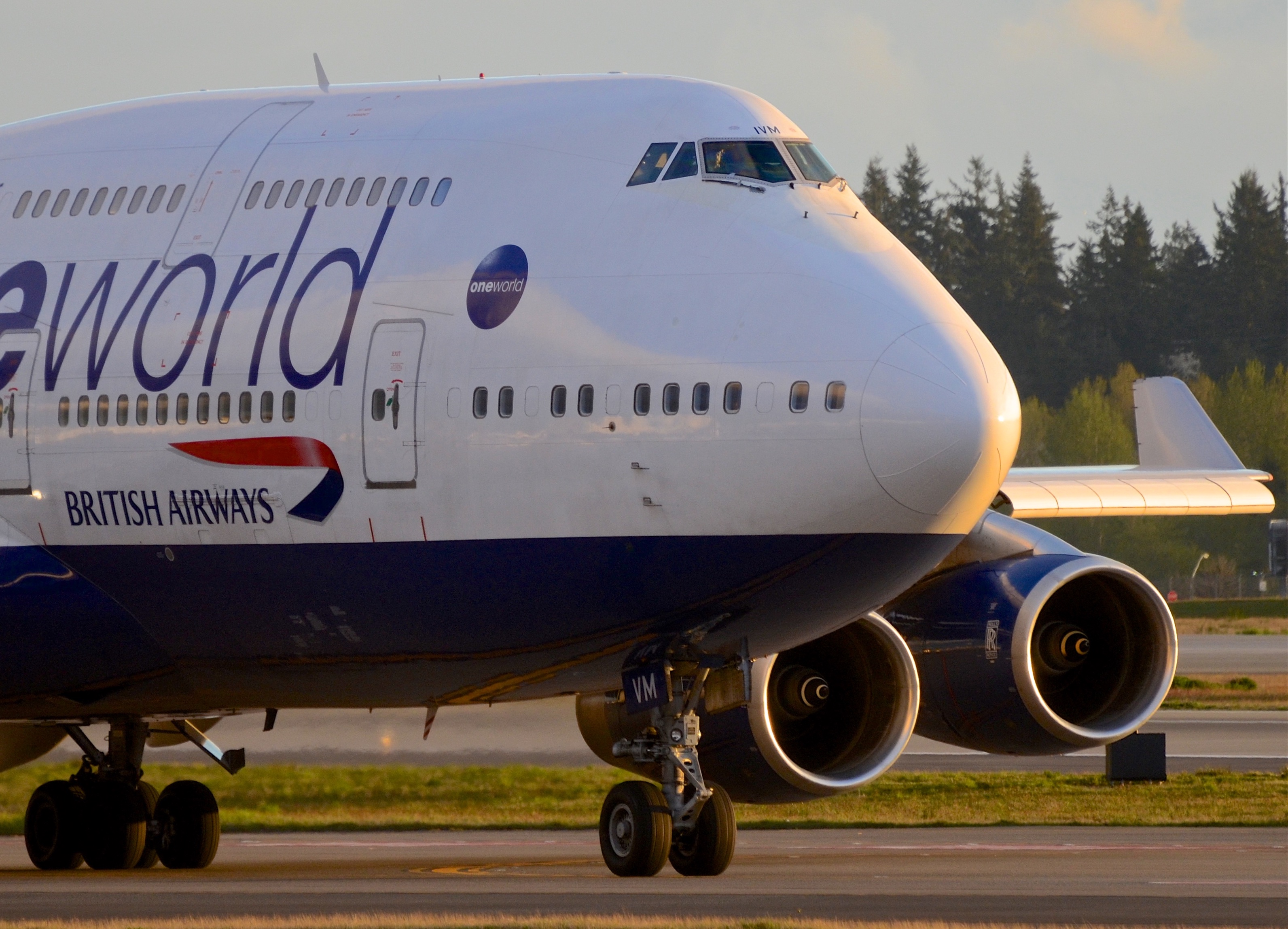Amid the rows and rows of parked airliners around the world hangs at least twice the number of engines covered and stored awaiting an uncertain return. COVID-19 has revealed a structural weakness built into the business model that drives the trio of the biggest engine makers.
For airplane makers, the excess hurts by crushing demand for new aircraft. But for engine makers, it’s a double hit as production rates fall and the number of airplanes in service drops precipitously and with it the lifeblood of its revenues, the aftermarket, collapses.
Related: Colliding interests will force engine makers into a new business model
Fundamentally engine makers General Electric, Rolls-Royce and Pratt & Whitney are at the mercy of the aircraft on which their engines fly, and the relationship is inherently symbiotic. It’s been this way for as long as there has been flying. Engine makers spend hugely to develop new engines and provide their wares to airplane makers typically at a loss with the expectation that that same engine will require lucrative parts and service throughout its lifetime.
Related: The airplanes that have survived the aviation apocalypse
And there’s an enormous population to service. Commercially operating passenger and freighter aircraft make up a population of more than 61,000 turboprop and turbofan engines at the end of 2019, according to an analysis by The Air Current based on pre-pandemic Cirium fleet data. That figure doesn’t include spares, business aircraft, helicopters or all those in use by militaries around the world.

There’s little engine makers can do to reverse the agreements in place on existing programs, but the pandemic and other technological and environmental dynamics are going to force a rethink and could spark a radical consolidation of engine makers. “But on future platforms, I think it’s a conversation that the airframe and the engine manufacturers will have,” said Rick Deurloo, senior vice president of sales for Pratt & Whitney in an interview this week with The Air Current.
The challenge of course is that same symbiotic relationship with plane makers means that Boeing, Airbus, Embraer or other new entrants need to actively consent to the creation of a new type of commercial arrangement for a clean-sheet or re-engined aircraft.
Related: Newcomers De Havilland and Mitsubishi find themselves dwarfed by their suppliers
The pandemic-induced injury to the engine-maker’s business model represents a stark reversal of fortunes. As of the middle of 2020, the in-service commercial engine population had fallen to around 41,000, according to Cirium, fully one-third smaller than at the end of 2019.
This article won a 2021 Aerospace Media Award. Subscribe to TACOnce the envy of the industry, much of any discussion around shifting the engine business model prior to the pandemic centered on how airplane makers could get in on the action. Boeing’s growing role in the services sector drove a discussion about what might engine makers be willing to share or give up to win a spot under the wing of its now-defunct New Mid-Market Airplane.
Related: Boeing’s NMA in doubt as airlines take fresh look at 737 Max & replacement
Now in 2020, it is a radically different landscape. The rosy prospects for a duopoly delivering nearly 2,000 airplanes annually along with support for the massive maturing fleet have evaporated, and with it a massive chunk of the long-term flow of cash generated through aircraft operations.
Related: Boeing collapses NMA and FSA into a single search for its next airplane
While GE, Rolls and Pratt are on the short end of the stick as fleets sit and retirements spike, the reality is that those aftermarket revenues were aggressively protected by the engine makers during the boom years, often to the chagrin of airlines and the International Air Transport Association who claimed the industry’s aftermarket practices were anticompetitive.
It is phenomenally lucrative over the long term. The sum of the individual parts inside a newly-delivered jet engine are estimated to be worth 250% to 300% of the retail price for a complete engine sold on a new airplane, according to AeroDynamic Advisory.

A marriage between Pratt & Rolls?
Today the stress and challenge to the long-held business models could upend the sector and how it does business, sparking an industry-reshaping consolidation.
Rolls-Royce has been badly damaged by the downturn in long-range twin-aisle flying with massive drawdowns in operations as international travel restrictions suppress demand. Rolls’ business model is anchored by its trademarked Power By The Hour maintenance package, which is tied to a fixed-cost-per-flying-hour rate.
An engine will roughly generate approximately three to four times more revenue in service than at delivery to a plane maker, according to AeroDynamic Advisory’s managing director, Kevin Michaels. Rolls’ enviable model allowed it to capture 100% of that revenue with a closed network of maintenance providers. For GE and Pratt, that revenue stream wasn’t fully captured, shared across a more open network of independent providers like Standard Aero.
Related: Rolls-Royce and the terrible, horrible, no good, very bad year
Rolls’ Power By The Hour model that “has served them so well over the years” is now dragging the company down, said Michaels and has typically been “more resilient in a recession than those who depend on time and material for overhauls.”
But for Rolls the larger question is not solely whether or not COVID-19 has revealed a problem with its business model, but of its product strategy. “It just so happens that they made a strategic mistake to focus on twin aisle long haul,” said Michaels.
The company said last week that widebody engine flying hours fell 50% in the first quarter and 75% in the second as COVID-19 wreaked havoc on global aviation. Warren East, Rolls’ chief executive, this week called COVID-19 a “historic shock” to aviation. The company anticipates those wide body engine flying hours will recover to approximately 70% of 2019 levels next year and deliveries of Trent-powered A350, A330neos and 787s are “likely to remain subdued.”
Its existing base is shrinking, too. On July 16, British Airways announced internally that it was planning to retire its venerable fleet of RB211-powered 747-400s with immediate effect, citing the airline’s expectation that long-haul flying wouldn’t rebound until 2023 “at the soonest,” according to an internal company message reviewed by The Air Current.

“The path to getting through the other side of this crisis isn’t crystal clear,” said Michaels. “Does the business model need to change? Yes, one way the problem could be addressed is through consolidation.”
Michaels sees COVID-19 as an accelerating force for a merger between Pratt parent Raytheon Technologies and Rolls-Royce. Pratt’s focus on a geared architecture for single-aisle aircraft is mirrored in Rolls’ geared UltraFan technology strategy on twin-aisles.
Related: Airbus and Rolls-Royce plot Ultrafan for A350neo
In an interview with Aviation Week published on July 13, Raytheon Technologies chief executive Greg Hayes said, “Longer term, the big question in my mind is what happens to Rolls-Royce, a great technology company that is facing challenging financial circumstances.” Hayes pointed to its abandoned partnership with Rolls-Royce on the V2500 through International Aero Engines. “Could we recreate that someday? Perhaps, but not now. Ian Davis, who’s the chairman over there, is a good guy. We always say, “Look, we need to find ways to collaborate so we can take on GE Aviation.”
Competitively the engine industry is already operating toward a duopoly structure. GE and Safran have long been in coordination through CFM International, but even the development of Safran’s Silvercrest engine, while troubled, still deliberately avoided clashing its thrust class with GE’s other business jet engines, said Michaels.
There’s little overlap on Rolls and Pratt’s commercial engine business, though its business jet engines have significant overlap. Michaels also pointed to the geopolitical compatibility as the U.K. exits the European Union. “It is the most logical merger on paper in commercial aerospace,” he said.
Write to Jon Ostrower at jon@theaircurrent.com
Subscribe to TACSubscribe to Continue Reading
Our award-winning aerospace reporting combines the highest standards of journalism with the level of technical detail and rigor expected by a sophisticated industry audience.
- Exclusive reporting and analysis on the strategy and technology of flying
- Full access to our archive of industry intelligence
- We respect your time; everything we publish earns your attention

